Donaldson, Walter: selected standards, hits, and other songs, 1918-1934
______________________________________
Songwriters Hall of Fame
Wikipedia
AllMusic.com
From Wikipedia, adapted:
Walter Donaldson (February 15, 1893 – July 15, 1947) was a prolific popular songwriter, producing many hit songs of the 1910s and 1920s. He was born in Brooklyn, New York, the son of a piano teacher. While still in school he wrote original music for school productions, and had his first professional songs published in 1915. The following year he had a hit with “The Daughter of Rosie O’Grady”. After serving in the United States Army in World War I, Donaldson was hired as a songwriter by Irving Berlin Music Company. He stayed with Berlin until 1928, producing many hit songs, then in 1928 established his own publishing company. His company was legally Donaldson, Douglas & Gumble, Inc, but all the publications had Walter Donaldson’s name in large letters, and the legal name of the company in fine print.
Walter Donaldson published some 600 songs for which he either composed the music and shared songwriting credit with a lyricist, or wrote both music and lyrics. His biggest hits include:
1918 How Ya Gonna Keep ‘Em Down on the Farm? (lyrics: Sam M. Lewis, Joe Young)
1922 Carolina in the Morning (lyrics: Gus Kahn)
1922 My Buddy (lyrics: Gus Kahn)
1922 Georgia (lyrics: Howard Johnson)
1924 I Love My Chili Bom-Bom (lyrics: Cliff Friend)
1925 Yes Sir, That’s My Baby (lyrics: Gus Kahn)
1925 I Wonder Where My Baby is Tonight (lyrics: Gus Kahn)
1926(?) Don’t Be Angry With Me (w.m. Walter Donaldson)
1927 My Blue Heaven (lyrics: George Whiting)
1927 At Sundown (w.m. Walter Donaldson)
1928 Love Me or Leave Me (lyrics: Gus Kahn)
1928 Makin’ Whoopee (lyrics: Gus Kahn)
1928 My Baby Just Cares for Me (lyrics: Gus Kahn)
1929 Kansas City Kitty (lyrics: Edgar Leslie)
1930 Little White Lies (w.m. Walter Donaldson)
1930 You’re Driving Me Crazy (What Did I Do?) (w.m. Walter Donaldson) — click on title to visit separate feature page
__________________
Nine songs with music composed by Walter Donaldson are ranked in the top thousand jazz standards by jazzstandards.com. The highest-ranked include “Makin’ Whoopee” (#202), and “Love Me or Leave Me” (#206), each with lyrics by Gus Kahn.
 The great lyricist Gus Kahn wrote the words for many of Donaldson’s most popular compositions. See the titles highlighted in bold navy blue in the list of hits above. Working with other songwriters, Kahn contributed to numerous additional timeless hits including “Ain’t We Got Fun,” “Toot, Toot, Tootsie (Goo’bye),” “It Had to Be You,” and “Dream a Little Dream of Me.”
The great lyricist Gus Kahn wrote the words for many of Donaldson’s most popular compositions. See the titles highlighted in bold navy blue in the list of hits above. Working with other songwriters, Kahn contributed to numerous additional timeless hits including “Ain’t We Got Fun,” “Toot, Toot, Tootsie (Goo’bye),” “It Had to Be You,” and “Dream a Little Dream of Me.”
Other Donaldson compositions included here:
with words and music by Walter Donaldson:
1926 Sam, the Old Accordion Man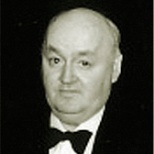
1927 Changes
1928 Out-O’-Town Gal
1930 That’s What I Like About You
1930 Without That Gal (possibly registered for copyright in 1926)
1931 An Ev’ning in Caroline
1934 Jungle Fever
and with lyrics by Grant Clarke:
1920 My Little Bimbo (Down on the Bamboo Isle)
_________________________________
1918
How Ya Gonna Keep ‘Em Down on the Farm (m. Walter Donaldson, w. Sam M. Lewis, Joe Young)
Nora Bayes – recorded 1919. Ms. Bayes was a popular comedienne, singer, and actress.
From the Wikipedia page on Nora Bayes:
 Born Eleanor “Dora” Goldberg,[3] with Dora being a pet or nickname, to a Jewish family in Joliet, Illinois, Bayes was performing professionally in vaudeville in Chicago by age 18. She toured from San Francisco, California to New York City and became a star both on the vaudeville circuit and the Broadway stage.
Born Eleanor “Dora” Goldberg,[3] with Dora being a pet or nickname, to a Jewish family in Joliet, Illinois, Bayes was performing professionally in vaudeville in Chicago by age 18. She toured from San Francisco, California to New York City and became a star both on the vaudeville circuit and the Broadway stage.
In 1908, she married singer-songwriter Jack Norworth. The two toured together and were credited for collaborating on a number of compositions, including the immensely popular “Shine On, Harvest Moon,” which the pair debuted in Florenz Ziegfeld’s Follies of 1908. Bayes and Norworth divorced in 1913.[4]
After America entered World War I Bayes became involved with morale boosting activities. George M. Cohan asked that she be the first to record a performance of his patriotic song Over There. Her recording was released in 1917 and became an international hit. She also performed shows for the soldiers. [read more]
.
Arthur Fields – 1919
.
From Wikipedia:
Arthur Fields (August 6, 1888 – March 29, 1953) was a United States singer (baritone) and songwriter.
He was born Abraham Finkelstein in Philadelphia, Pennsylvania, but grew up mainly in Utica, New York. He became a professional singer as a youngster. Around 1908, he toured with Guy Brother‘s Minstrel Show, and helped form a vaudeville act “Weston, Fields and Carroll”.
His first hit as a songwriter was “On the Mississippi” (1912), which he wrote the music for with Harry Carroll and Ballard MacDonald supplied the lyrics. In 1914 he wrote the lyrics to “Aba Daba Honeymoon“, which was revived for the 1950 M.G.M. film Two Weeks With Love and thus got a renewed popularity which brought Fields large royalty incomes during his last two years. [read more]
My Little Bimbo (Down on the Bamboo Isle) – (Walter Donaldson, Grant Clarke)
See the separate page, here:
______________________
1922
Click on the title to visit our separate feature page.
- Carolina in the Morning (m.Walter Donaldson, w. Gus Kahn)
_________________
My Buddy (Walter Donaldson, Gus Kahn)
Henry Burr – 1922
.
Doris Day – 1952
_____________________
1924
I Love My Chili Bom-Bom (m. Walter Donaldson, w. Cliff Friend)
The Savoy Havana Band at the Savoy Hotel, London — issued in 1924 on Columbia (UK) 3435, b/w “Pasadena”
From Wikipedia:
The Savoy Havana Band was a British dance band of the 1920s. It was resident at the Savoy Hotel, London, between 1921 and 1927.
The band was formed by the American saxophonist Bert Ralton in 1921. Originally there were six players including Ralton. It was later increased to ten players. From 1924 it was led by the English violinist Reginald Batten. Both the Savoy Havana Band and their colleagues the Savoy Orpheans were under the management of Wilfred de Mornys.
Among the players was a young American saxophonist, Rudy Vallee, whose attempts to become a vocalist were discouraged by his fellow-players. Another member of the ensemble was the pianist Billy Mayerl.
____________________
1925
 Yes Sir, That’s My Baby (Walter Donaldson, Gus Kahn) was a hit for Ace Brigode in 1925 and for Eddie Cantor in 1930. It was later a hit for Rick Nelson in the 1950s and Frank Sinatra in the 1960s.
Yes Sir, That’s My Baby (Walter Donaldson, Gus Kahn) was a hit for Ace Brigode in 1925 and for Eddie Cantor in 1930. It was later a hit for Rick Nelson in the 1950s and Frank Sinatra in the 1960s.
According to one source, the song was written when Donaldson & Kahn were visiting Eddie Cantor. Cantor’s daughter Marjorie brought out one of her favorite toys, a walking mechanical pig. She wound it up and it started walking in rhythm while two notes kept coming from the little creature. Kahn was inspired and started working [on] lyrics to these notes in rhythm with the pig, coming up with the title and opening line of the chorus in short order. – excerpts from wikipedia
Ace Brigode and his 14 Virginians – recorded 2 June 1925
.
Coon-Sanders Original Nighthawk Orchestra, vocal refrain by C. A. Coon — recorded on July 27, 1925 in Camden, NJ; issued circa late 1925
.
Jason Robards in the feature film A Thousand Clowns (1965)
______________
I Wonder Where My Baby is Tonight (m. Walter Donaldson, w. Gus Kahn)
Ben Selvin’s Orchestra (recording as “The Knickerbockers”) – 1925
.
The Quintette du Hot Club de France – Django and the QHCF recorded the song three times in 1939, twice on 21/3/39 (21 March 1939) and once on 17/5/39 (17 May 1939) with the same lineup each time; personnel: Stephane Grappelly (g), Django Reinhardt, Joseph Reinhardt, Pierre Ferret (g), Emmanuel Soudieux (b)
_____________________
1926
Don’t Be Angry With Me (w.m. Walter Donaldson)
Joe Candullo and his Everglades Orchestra – dated by the provider 9 October 1926
.
Esther Walker and Male Quartet – recorded on 6 October 1926; issued on Brunswick 3348, b/w “It Made You Happy When You Made Me Cry”
.
Sam, the Old Accordion Man (w.m. Walter Donaldson)
The Williams Sisters, with piano accompaniment by Wayne Allen – recorded 18 December 1926
.
Ruth Etting – recorded 1 March 1927, New York
.
Jim Hession – recent, undated
.
Janet Klein and Ian Whitcomb — performed live at the Steve Allen Theater, December 2010
_________________
1927
 My Blue Heaven (Walter Donaldson, George Whiting) – Gene Austin introduced the song in 1927 with his recording which became a big hit. Later popular covers include those by Jimmie Lunceford in 1935 and Fats Domino in 1956. The list at wikipedia of recorded versions is one of the longest I’ve seen. Following Austin’s hit many popular orchestras of the late 20s and of the 1930s and 40s recorded versions of the song including those of Paul Whiteman, Nat Shilkret (The Victor Salon Orchestra) , Don Vorhees, Jimmie Lunceford, Woody Herman, Glen Miller, Ted Heath and numerous others. It has remained a popular tune for vocalists.
My Blue Heaven (Walter Donaldson, George Whiting) – Gene Austin introduced the song in 1927 with his recording which became a big hit. Later popular covers include those by Jimmie Lunceford in 1935 and Fats Domino in 1956. The list at wikipedia of recorded versions is one of the longest I’ve seen. Following Austin’s hit many popular orchestras of the late 20s and of the 1930s and 40s recorded versions of the song including those of Paul Whiteman, Nat Shilkret (The Victor Salon Orchestra) , Don Vorhees, Jimmie Lunceford, Woody Herman, Glen Miller, Ted Heath and numerous others. It has remained a popular tune for vocalists.
Gene Austin – 1927(?) — this recording by Austin was, according to Wikipedia, a “huge hit” in 1928
.
Paul Whiteman and his Orchestra – recorded 6 July 1927
Personnel:
Henry Busse, Red Nichols – trumpets
Wilbur Hall, trombone, Jack Fulton, Tommy Dorsey – Trombones
Max Farley, Chester Hazlett, Hal McLean, Jimmy Dorsey? – reeds
Charles Strickfaden – alto sax, baritone sax
Kurt Dieterle, Mischa Russell,Mario Perry, Matt Malneck – violins
Harry Perella – piano
Mike Pingitore – banjo
John Sperzel – tuba
Harold MacDonald – drums
Jack Fulton, Charles Gaylord, Austin Young, Bing Crosby, Al Rinker – vocals*
*Notes: The credits are from the video provider with one exception. Chester Gaylord changed to Charles Gaylord after a visitor (see anonymous comment) who knew and worked with the man corrected me.
Two of the vocalists, Bing Crosby and Al Rinker (recently arrived from Spokane, Washington) were hired by Paul Whiteman in late 1926 but weren’t immediately successful. However, soon they were joined by songwriter Harry Barris and became a popular trio after Whiteman’s recording of Barris’s song Mississippi Mud, featuring vocals by the trio, became a hit. The three were billed as Paul Whiteman’s Rhythm Boys.
.
Vaughn De Leath – recorded on 5 January 1928 (matrix #18151); issued on the 10-inch disk Edison “Diamond Disc” Record 52192, c/w “Keep Sweeping the Cobwebs Off the Moon”; also issued on the Edison Blue Amberol cylinder 5470
.
.
____________________
My Blue Heaven (m. Walter Donaldson, w. George Whiting)
When whippoorwills call
And evening is nigh
I hurry to my blue heaven
A turn to the right
A little white light
Will lead you to my blue heaven
You’ll see a smiling face,
A fireplace, a cozy room,
A little nest that’s nestled
Where the roses bloom
Just Mollie and me
And baby makes three,
We’re happy in my blue heaven
________________________
Glenn Miller and his Orchestra – date unknown, live
.
Gary Lawrence and His Sizzling Syncopators — date unknown; the band performs a Ferde Grofé arrangement
Pages: 1 2











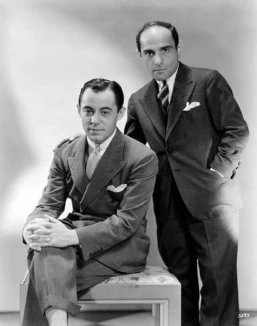

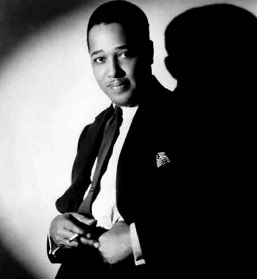


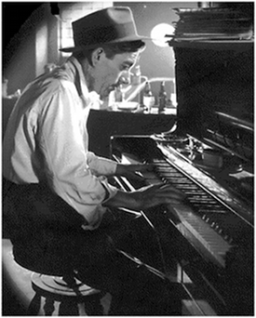
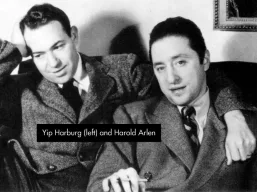




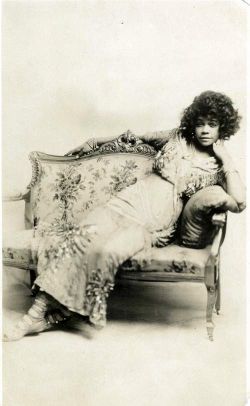










Sep 25, 2010 @ 14:58:25
love it!
LikeLike
May 18, 2011 @ 18:45:33
I heard Walter Donaldson’s 1928 song “When You Said Goodnight, Did you really mean Goodbye” and enjoyed it so much, I wanted to get the sheet music so I could play it on my piano. I have had no luck finding this sheet music. Is there any other site besides “sheet music” where I can find this song? Nick Lucas and Seger Ellis both recorded this and it’s a really pretty song. Please help me find the sheet music for this song. There must be a copy somewhere.
Tommy
LikeLike
May 18, 2011 @ 21:01:49
Hi Thomas C., I will try to help you. There are presently 24 sheet music and sheet music cover sites listed in my sidebar, but a lot of these are specialty sites, as you can tell from the titles, so they can be skipped. The University collections are among the best. The Levy Sheet Music Collection at Johns Hopkins, and the University of Colorado digital collection are good. I’ll do a quick search myself and see if I can’t come up with something.
Question of songwriting credits: While Nicklucas.com credits the song to Walter Donaldson, redhotjazz.com gives the songwriting credits to “(Caesar, Friend).” That would be music by Cliff Friend and words by Irving Caesar. Both sites are refering to the same Nick Lucas recording of May 1928. I don’t know which is correct.
— Jim
The Seger Ellis recording:
LikeLike
Jun 01, 2011 @ 16:21:49
Update:
ASCAP’s ACE title search credits a song titled When You Said Goodnight to Walter Donaldson alone.
LikeLike
Jul 02, 2011 @ 21:20:19
I’m looking for the lyrics to “There Must Be Somebody Waiting for Me in Loveland.” How can I find them?
Fred Broer
feb3@earthlink.net
LikeLike
Jul 02, 2011 @ 22:34:10
Fred, The song There Must Be Somebody Waiting for Me (in Loveland) was written by Walter Donaldson, both words and music, and used in the 1929 musical film Glorifying the American Girl, a Florenz Ziegfeld production. In a brief search I was unable to locate the lyrics. Also failed to find a collection of lyrics by Donaldson, or of songs for which Donaldson wrote the music (Most of his numerous hit songs were co-written with a lyricist). Will let you know if I come across it. — Jim
LikeLike
Feb 06, 2012 @ 00:13:22
The singer on “My Blue Heaven” is Charles Gaylord not Chester Gaylord. He sang on many songs for Paul Whiteman’s Orchestra. You have correctly listed him on “Makin’ Whoopee”. He also sang on “Changes” and many other records. (even played violin on most. I knew Charles Gaylord well, he was my friend co-worker and neighbor.
LikeLike
Feb 06, 2012 @ 04:50:00
Thanks, Anon. Does Gaylord sing the lead on Changes? It’s clearly not Crosby. Was he a regular member of Whiteman’s Orchestra at this time?
The arrangement of this song (My Blue Heaven) is quite unusual. Ordinarily the vocal refrain during this era would come roughly half way into the recording. In this case, it begins and ends with the refrain, with a long instrumental section in between. Also, of the five vocalists listed only one is singing the words. The others only hum. — Jim
LikeLike
Mar 16, 2012 @ 18:33:07
What a marvelous site this is … a fitting tribute to Walter Donaldson and his collaborators. Thank you.
LikeLike
Mar 16, 2012 @ 22:24:33
Thanks, Maggie. Glad you enjoyed your visit.
LikeLike
Jul 16, 2012 @ 16:19:16
Hello Doc
I have just noticed your reply thank you. I have recorded songs by Walter Donaldson, some of them with lyrics by Gus Kahn, wonderful material.
Maggie Britton
LikeLike
Jul 17, 2012 @ 12:02:00
Maggie Britton links:
Maggie Britton (home)
http://oakrecords.com.au/maggie-britton/
http://www.myspace.com/maggiebritton
http://www.facebook.com/maggiebritton
LikeLike
Jan 08, 2019 @ 20:59:10
LikeLike